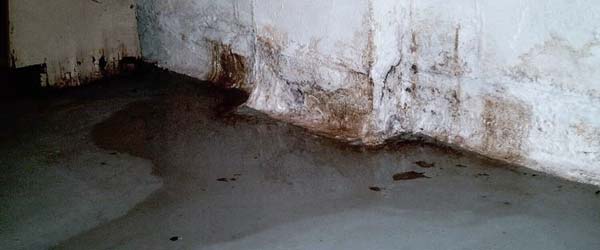
The Problem
Arguably one of the more common indicators that your basement or crawl space is due for some professional attention, is a phenomenon known as cove seepage.
To know more about cove seepage, you first have to know how a foundation is built. Believe it or not, the average foundation is made up of three distinct, separate pours of concrete. These sections include the footer, the walls, and the floor. First, the footer is laid out for the foundation walls to rest upon. After the footer cures, the foundation walls are poured. After the foundation walls are cured, the floor is poured to allow a clean, level walking surface.
The problem with this method of home construction, is that these separations in concrete aren’t made to resist water penetration. In fact, it’s probable that these joints will leak during the course of your ownership without professional attention; assuming your home still has the original drain tile that was built with the home.
With cove seepage, what happens is water pressure builds underground and swells upward against your foundation. This pressure, or hydrostatic pressure, forces water into any and every open cavity available. In the case of your home, this often means the cove joint where the wall is laid on top of the footer.
The Solution
Although every situation is different, there are a few general ways to remedy cove seepage that can be applied to almost every situation. The first and most obvious is to repair any wall cracks that may be affecting the area. For homes with finished and covered walls, standing water on the floor may appear to be cove seepage, but is actually pouring down from the sill plate or a wall crack.
If cove seepage is confirmed, the problem should be treated from both the outside and the inside to ensure a permanent, lifetime repair. First, the exterior of the home should be excavated, sealed, and provided proper drainage to ensure water isn’t allowed to pool around the home. Next, interior drainage tiled should be laid around the interior perimeter of the basement floor, and connected to a sump pit. This system will ensure water pressure is being effectively relieved before it has a chance to push up through your basement floor.
“Band-aid” repairs include hydraulic cement, putties, and waterproof paints, and are not recommended as a replacement for professional basement waterproofing solutions. These are only temporary measures, and should be treated as such.
Read more about basement waterproofing with our Free E-Book!»
One of my worst fears is moving into a house that floods. We are moving into a house that rains a lot and I want to get it waterproofed before we move in. I think that is the most pre-cautious route.